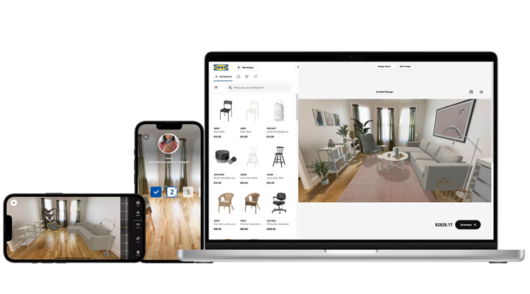The barometer of a brand’s yearly success heavily depends on fourth-quarter performance. Around 40 per cent of total order volume for the year occurs in Q4. Nine in 10 of the best-selling days for e-commerce retailers come in the same quarter. And one-third of all retail sales happen during the holiday season.
With so much riding on this part of the year, businesses need to be well-equipped to handle spikes in traffic and order volumes. To help you prepare the groundwork, Tryzens’ experts lay out their strategic insight into making peak season a success:
1. Testing
When gearing up for peak, ensure rigorous testing of your content and promotional plans on both test environments and in production well in advance. You don’t want to roll out untested strategies on Black Friday – that is not the time for experimentation!
For digital commerce stores on Salesforce Commerce Cloud, we recommend using staging previews and creating a staff-specific customer group to test in production.
For digital commerce stores on Adobe Commerce (formerly Magento), create all promotions in staging and verify they work before repeating the same steps on production.
For digital commerce stores on Shopify, familiarise yourself with Shopify Flow so you can schedule content. We recommend testing on your pre-prod environment to ensure no issues occur on production if you have one. Where a pre-prod environment is not accessible, make all changes in a new theme so that you can thoroughly test. When ready, this can then be published manually or using Flow.
2. Traffic predictions
Traffic predictions are a critical component of successful peak season preparations for retailers. To facilitate this, work with your hosting provider to ensure that the right server and cloud capacity provisions are in place.
Carry out load testing to prove that the system is able to cope with the predicted traffic and that the load doesn’t overwhelm the system. In e-commerce, speed cannot be overstated. Website conversion rates drop by an average of 4.42% with each additional second of load time. If you are well prepared for traffic, your site is more likely to facilitate spikes in user activity smoothly and quickly.
3. Know your weak points
Be proactive in identifying and addressing potentially vulnerable areas to ensure that your business is well-prepared to handle increased demand and visitor traffic.
Review code to understand where there are potential areas that could collapse during times of high traffic. Again, load testing is the best way to understand this. Ask yourself whether these are areas you are willing to have problems with or whether they need resolving.
In particular, check your caching strategy. Effective caching can significantly improve your website’s performance during high-traffic periods. When proper caching is in place, a large portion of incoming traffic will be served from cached resources, reducing the load on lower levels of your technology stack and improving page loading times and the overall user experience.
4. Third-party partner support
Review your key third-party contact list and understand their support processes during peak season. It’s key to understand if there are any changes to the support provided by key third-party suppliers during peak season so that you know how to engage them should the need arise.
Gain a clear understanding of how your key third-party partners will be monitoring your website (whether it be the storefront or backend) and establish a well-defined plan for communicating any deviations from expected behaviour as well as the process for responding to these changes.
5. Security
Safeguard your digital storefront by reviewing your security processes. Cyberattacks tend to be more common during peak periods. Bad actors have more traffic to hide in while resources are stretched to respond to threats.
Retailers should review their security stance to ensure their storefront has no vulnerabilities. This can be achieved through pen testing. In addition, consider automated security code tests as a one-off for peak before including them as part of an ongoing delivery process.
Another security aspect that heightens in importance during peak season is observability. It’s a crucial time to ensure you have visibility of potentially suspicious traffic or requests coming to the storefront. So have a known, documented process in place for responding to anything that may arise.
Finally, retailers should have a content security policy (CSP) implemented that governs the flow of data to and from the storefront – defining a set of rules that specify which sources of content are safe. It’s the only way you can be sure that data is only being shared with known and trusted third parties.
Optimise your peak season strategy with Tryzens
If you’re gearing up for peak season, then connect with Tryzens. We implement and optimise peak season strategies for major international brands and retailers, preparing them for retail’s main event of the year.






